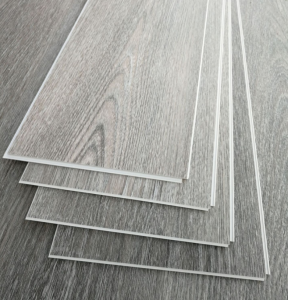Certainly, let’s compare vinyl flooring and laminate flooring in a showdown to help you understand the differences between these two popular flooring options:
1. Material Composition:
- Vinyl Flooring: Vinyl flooring is made primarily from synthetic materials, including PVC (polyvinyl chloride) and various additives. It often consists of multiple layers, including a wear layer, a printed design layer, a vinyl core layer, and a backing layer.
- Laminate Flooring: Laminate flooring is composed of a core layer of high-density fiberboard (HDF) or particleboard, a high-resolution image layer that simulates the appearance of wood or other materials, and a protective wear layer made of melamine resin.
2. Aesthetics and Design:
- Vinyl: Vinyl flooring offers a wide range of designs, including wood, stone, and abstract patterns. It can closely mimic the appearance of natural materials and is available in various colors and textures.
- Laminate: Laminate flooring also provides a variety of wood and stone patterns. While it can look realistic, some people may find that it doesn’t replicate natural materials as convincingly as vinyl does.
3. Water Resistance:
- Vinyl: Vinyl flooring is inherently water-resistant, making it suitable for moisture-prone areas like bathrooms and kitchens. It can handle spills and moisture without warping or damage.
- Laminate: Laminate flooring is less water-resistant than vinyl. While some laminates have water-resistant coatings, prolonged exposure to moisture can still cause swelling and damage.
4. Durability and Wear Resistance:
- Vinyl: Vinyl flooring is known for its durability and resistance to scratches, stains, and wear. It’s suitable for high-traffic areas and homes with pets.
- Laminate: Laminate is also durable, but it can be more susceptible to scratches and wear, especially in areas with heavy traffic. Higher-quality laminates tend to offer better resistance.
5. Installation:
- Vinyl: Vinyl flooring is available in various installation formats, including peel-and-stick tiles, click-lock planks, and sheet vinyl. It’s often DIY-friendly due to its straightforward installation methods.
- Laminate: Laminate flooring typically features a click-and-lock installation system. While it’s still possible for DIY installation, it might require slightly more skill and precision.
6. Comfort and Sound:
- Vinyl: Vinyl flooring offers a softer and more cushioned feel underfoot compared to laminate. It can also contribute to sound absorption, reducing noise transmission.
- Laminate: Laminate flooring is harder underfoot and might be less comfortable for prolonged standing. It can create a louder acoustic environment due to its harder surface.
7. Cost:
- Vinyl: Vinyl flooring is generally more budget-friendly than laminate, especially in the mid to lower price ranges. It offers a cost-effective way to achieve the look of natural materials.
- Laminate: Laminate flooring can vary in price, with higher-end options approaching the cost of real hardwood. It’s often more expensive than entry-level vinyl.
8. Resale Value:
- Vinyl: While vinyl flooring has improved in terms of aesthetics and durability, some buyers might still prefer natural materials like hardwood.
- Laminate: Laminate flooring, especially high-quality options, can add value to a home and attract potential buyers looking for a durable and visually appealing flooring option.
In the showdown between vinyl flooring and laminate flooring, the choice ultimately depends on your specific needs and priorities. Vinyl is known for its water resistance, durability, and comfortable feel, while laminate can provide a cost-effective alternative with a wide range of designs. Assessing your space, preferences, and budget will help you make the right flooring decision.















